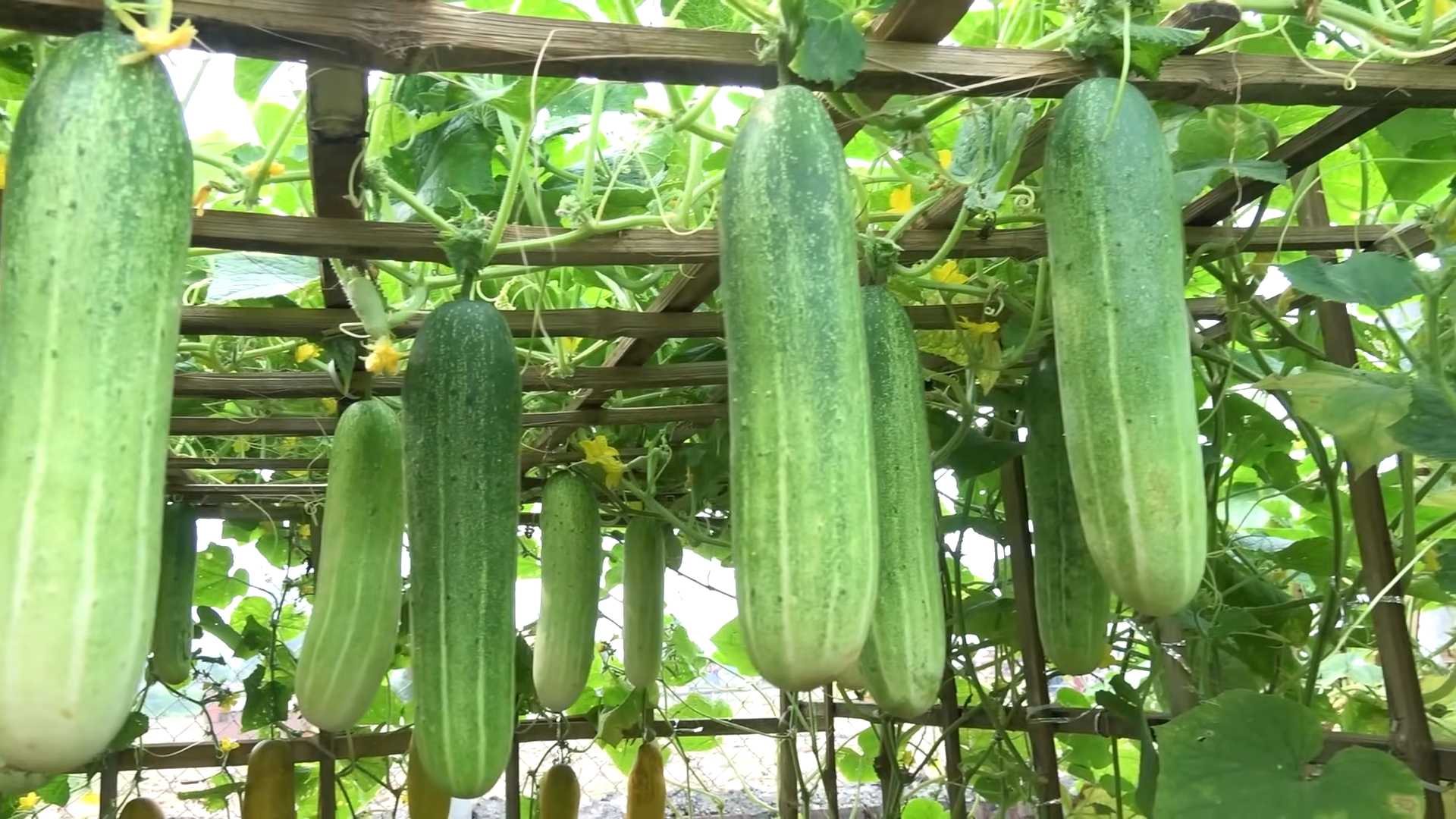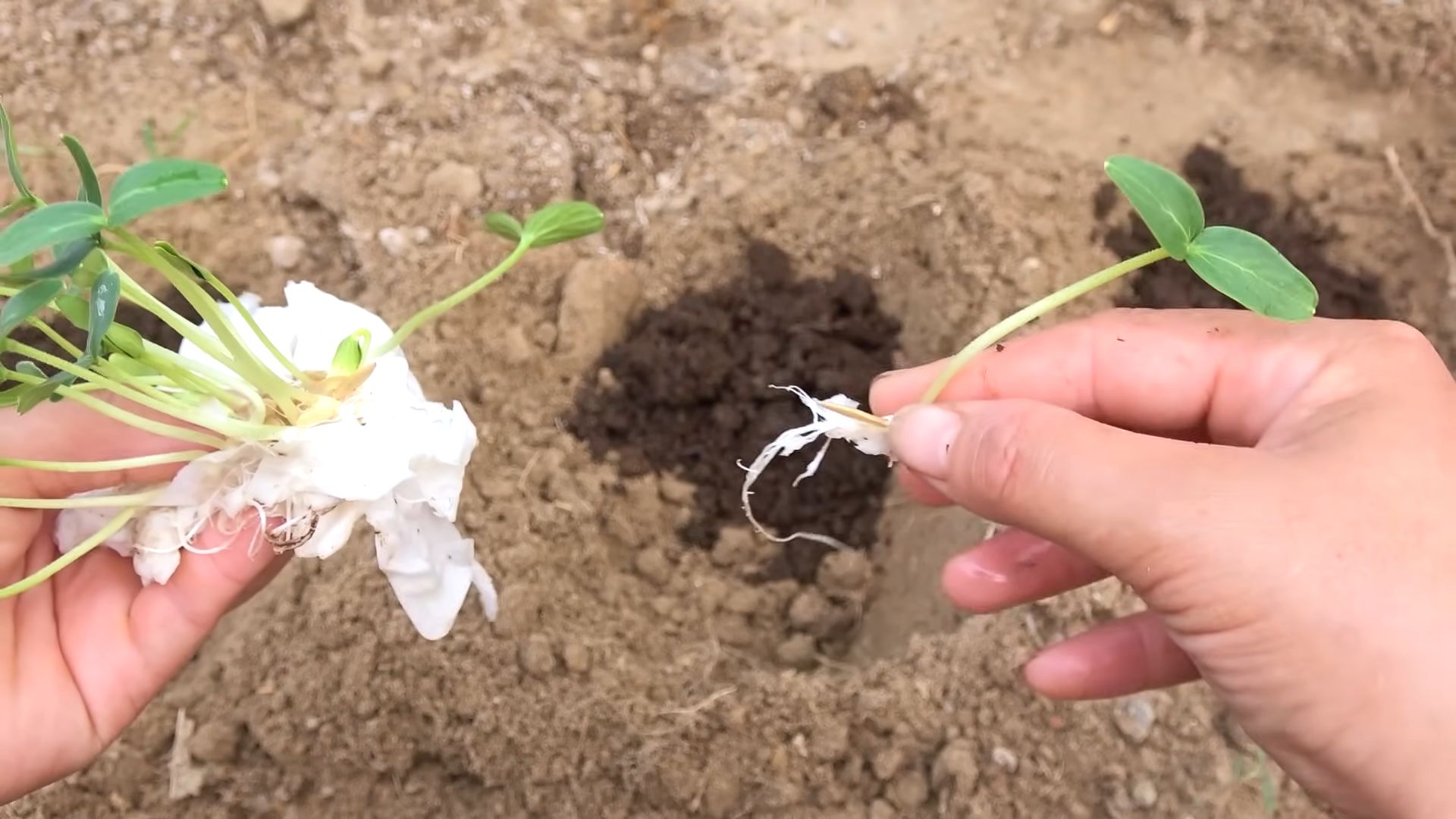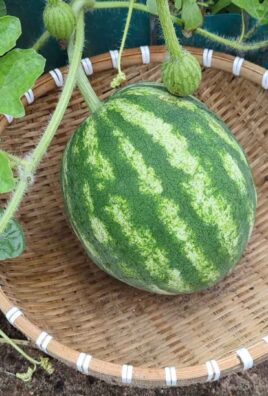Growing Cucumbers Shortcut: Imagine biting into a crisp, refreshing cucumber you grew yourself, knowing you didn’t spend hours toiling in the garden. Sounds good, right? For centuries, cucumbers have been a staple in diets worldwide, from ancient Rome where emperors demanded them year-round, to Asian cultures where they symbolize good health and longevity. But let’s be honest, sometimes the journey from seed to salad can feel a bit long and winding.
That’s where this DIY guide comes in! We all want fresh, homegrown produce, but not everyone has the time or space for a full-blown gardening operation. This article is packed with clever tricks and hacks designed to give you a growing cucumbers shortcut, regardless of your experience level. I’m going to share my favorite time-saving tips that will help you maximize your yield with minimal effort.
Whether you’re dealing with limited space, a busy schedule, or simply want to enjoy the fruits (or vegetables!) of your labor sooner, these simple strategies will help you cultivate a thriving cucumber patch. Get ready to ditch the gardening guesswork and discover the secrets to a bountiful harvest, faster than you ever thought possible!

Growing Cucumbers: My Lazy Gardener’s Trellis Trick!
Okay, let’s be honest, I love fresh cucumbers, but I’m not always the most diligent gardener. I’ve tried different methods over the years, and I’ve finally landed on a system that works wonders for me – a super simple, space-saving trellis that practically grows the cucumbers for you! This method is perfect if you’re short on space, want to avoid sprawling vines taking over your garden, or just want a more organized and productive cucumber patch.
Why Trellis Cucumbers?
Before we dive into the how-to, let’s quickly cover why trellising cucumbers is a game-changer:
* Space Saving: Cucumber vines can get HUGE. Trellising keeps them contained and growing vertically, freeing up valuable ground space.
* Better Air Circulation: Improved airflow reduces the risk of fungal diseases like powdery mildew, which can plague cucumber plants.
* Easier Harvesting: No more crawling around on the ground searching for hidden cucumbers! They’re hanging right there, easy to spot and pick.
* Cleaner Cucumbers: Trellised cucumbers are less likely to come into contact with soil, resulting in cleaner, less blemished fruits.
* Increased Yield: Healthier plants and better access to sunlight often lead to a higher yield of delicious cucumbers.
Choosing the Right Cucumber Variety
Not all cucumbers are created equal when it comes to trellising. Bush varieties are designed to stay compact and don’t need a trellis. You’ll want to choose a vining variety. Here are a few of my favorites that do well on a trellis:
* Spacemaster: A compact vine that produces good-sized cucumbers. Great for smaller gardens.
* Marketmore 76: A classic slicing cucumber that’s reliable and productive.
* Diva: A burpless cucumber with thin skin and a mild flavor.
* Lemon Cucumber: A fun, round cucumber with a slightly sweet taste.
Materials You’ll Need
This trellis is designed to be inexpensive and easy to build. Here’s what you’ll need:
* 4 Wooden Stakes (approximately 6-8 feet long): I usually use cedar or pressure-treated wood for durability. You can find these at any home improvement store.
* Heavy-Duty Garden Twine or Jute: This will be used to create the trellis netting. Make sure it’s strong enough to support the weight of the cucumber vines and fruits.
* Hammer or Mallet: For driving the stakes into the ground.
* Measuring Tape: To ensure even spacing of the stakes.
* Scissors or Knife: To cut the twine.
* Gloves: To protect your hands.
* Cucumber Seedlings or Seeds: Of course!
Building the Cucumber Trellis: Step-by-Step
Okay, let’s get building! This is the fun part.
1. Prepare the Planting Area
First, choose a sunny spot in your garden that gets at least 6-8 hours of sunlight per day. Cucumbers are sun-loving plants! Amend the soil with compost or other organic matter to improve drainage and fertility. I like to add a little slow-release fertilizer at this stage too.
2. Position the Stakes
This trellis is basically a square or rectangle. Decide how large you want your trellis to be based on the number of cucumber plants you plan to grow. I usually space my stakes about 3-4 feet apart.
* Pound the first stake into the ground. Use your hammer or mallet to drive it in firmly. You want it to be stable and not wobble. Aim for at least 1-2 feet of the stake to be underground.
* Measure the desired distance (3-4 feet) from the first stake and pound in the second stake.
* Repeat for the third and fourth stakes, creating a square or rectangle. Make sure the stakes are relatively level with each other.
3. Create the Trellis Netting
This is where the magic happens! We’re going to create a grid of twine that the cucumber vines can climb.
* Tie the twine to one of the corner stakes, near the base. Make a secure knot. I usually use a square knot or a bowline.
* Run the twine horizontally to the opposite stake and tie it securely. Pull the twine taut as you tie it.
* Continue running the twine horizontally between the stakes, creating rows about 6-8 inches apart. Tie the twine securely to each stake.
* Once you’ve reached the top of the stakes, start running the twine vertically. Tie the twine to the top of one stake and run it down to the base of the opposite stake.
* Continue running the twine vertically, creating columns about 6-8 inches apart. Tie the twine securely to each stake.
You should now have a grid of twine that looks like a net. This is what your cucumber vines will climb!
4. Planting the Cucumbers
Now it’s time to plant your cucumber seedlings or seeds.
* If you’re using seedlings, dig a small hole near the base of each stake. Gently remove the seedling from its container and plant it in the hole. Water thoroughly.
* If you’re using seeds, plant them directly in the ground near the base of each stake. Follow the instructions on the seed packet for spacing and depth. Water gently.
I usually plant 2-3 cucumber plants per stake, depending on the variety.
5. Training the Vines
As the cucumber vines grow, you’ll need to help them climb the trellis.
* Gently guide the vines towards the twine. You can use small pieces of twine or plant clips to attach the vines to the trellis.
* Continue training the vines as they grow, encouraging them to climb upwards.
* Prune any side shoots or suckers that are growing from the main vine. This will help to focus the plant’s energy on producing cucumbers.
Caring for Your Trellised Cucumbers
Once your cucumbers are planted and trained, here are a few tips for keeping them happy and healthy:
* Water Regularly: Cucumbers need consistent moisture, especially during hot weather. Water deeply at the base of the plants, avoiding getting the leaves wet.
* Fertilize: Feed your cucumber plants with a balanced fertilizer every 2-3 weeks.
* Watch for Pests and Diseases: Keep an eye out for common cucumber pests like aphids, cucumber beetles, and squash bugs. Treat any infestations promptly. Also, watch for fungal diseases like powdery mildew and downy mildew.
* Harvest Regularly: Harvest your cucumbers when they are the desired size and color. Regular harvesting will encourage the plant to produce more cucumbers.
Troubleshooting
Even with the best planning, sometimes things don’t go exactly as expected. Here are a few common issues and how to address them:
* Vines Not Climbing: If your cucumber vines are refusing to climb, gently guide them towards the trellis and secure them with twine or plant clips. Make sure the twine is taut and provides a good grip for the vines.
* Yellowing Leaves: Yellowing leaves can be a sign of overwatering, underwatering, nutrient deficiency, or disease. Check the soil moisture and adjust your watering accordingly. Fertilize with a balanced fertilizer. Inspect the leaves for signs of pests or diseases.
* Poor Fruit Production: Poor fruit production can be caused by a lack of pollination, insufficient sunlight, or nutrient deficiency. Make sure your plants are getting enough sunlight and fertilize regularly. You can also try hand-pollinating the flowers by transferring pollen from the male flowers to the female flowers.
* Trellis Collapsing: If your trellis is starting to collapse, reinforce it with additional stakes or twine. Make sure the stakes are driven deep into the ground and the twine is strong enough to support the weight of the vines and fruits.
Alternative Trellis Ideas
While I love my simple stake and twine trellis, there are other options you can try:
* A-Frame Trellis: This is a sturdy and attractive option that’s great for larger gardens.
* Cattle Panel Trellis: Cattle panels are strong and durable and can be used to create a large, arched trellis.
* Repurposed Ladder Trellis: An old ladder can be transformed into a unique and rustic trellis.
* DIY Netting Trellis: Use netting stretched between posts or stakes to create a simple and inexpensive trellis.
Enjoy Your Harvest!
With a little bit of effort, you can have a bountiful harvest of fresh, delicious cucumbers. This simple trellis method has worked wonders for me, and I hope it works for you too! Happy gardening!

Conclusion
So, there you have it! This simple yet effective “Growing Cucumbers Shortcut” is more than just a gardening hack; it’s a game-changer for anyone looking to maximize their cucumber yield with minimal effort. We’ve walked you through the process, highlighting how this method not only saves space but also promotes healthier, more productive plants.
Why is this a must-try? Because it addresses several common cucumber-growing challenges head-on. By training your cucumber vines vertically, you’re significantly reducing the risk of fungal diseases that thrive in damp soil conditions. Improved air circulation around the plants leads to drier foliage, making it harder for mildew and other pathogens to take hold. Plus, harvesting becomes a breeze! No more bending and searching under sprawling leaves – your cucumbers will be proudly displayed, ripe and ready for picking.
But the benefits don’t stop there. This method also optimizes sunlight exposure. Every leaf gets its fair share of sunshine, leading to more efficient photosynthesis and, ultimately, more cucumbers. And let’s not forget the aesthetic appeal! A well-trained cucumber vine climbing a trellis or fence adds a touch of elegance to any garden.
Now, let’s talk variations. While we’ve focused on using a trellis, feel free to experiment with other support structures. A sturdy fence, a repurposed ladder, or even a DIY bamboo structure can all work wonders. Consider the size and weight of your mature cucumber vines when choosing your support system. For smaller gardens, container gardening with this vertical growing technique is an excellent option. Choose a large pot (at least 5 gallons) and ensure it has good drainage.
Another variation involves the type of cucumber you grow. While this shortcut works well for most cucumber varieties, some are naturally more suited to vertical growth. Look for varieties labeled as “bush” or “compact,” as they tend to have shorter vines and require less support. However, even vining varieties can be successfully trained with a little extra attention.
Don’t be afraid to get creative with your trellising system. You can use twine, netting, or even old pantyhose to secure the vines to the support structure. Just make sure the material is soft and won’t damage the delicate stems. As the vines grow, gently guide them along the trellis, using clips or ties to keep them in place.
Finally, remember to provide your cucumbers with adequate water and nutrients. Consistent watering is crucial, especially during hot weather. A balanced fertilizer, applied every few weeks, will help ensure healthy growth and abundant fruit production.
We are confident that this “Growing Cucumbers Shortcut” will revolutionize your cucumber-growing experience. It’s a simple, effective, and rewarding technique that will yield impressive results. So, what are you waiting for? Give it a try and see for yourself! We encourage you to share your experiences, photos, and tips in the comments below. Let’s build a community of cucumber-growing enthusiasts and learn from each other. Happy gardening!
Frequently Asked Questions (FAQ)
What type of cucumbers are best suited for vertical growing?
While most cucumber varieties can be trained to grow vertically, some are naturally better suited than others. Bush or compact varieties are ideal for smaller spaces and require less support. Vining varieties, such as English cucumbers or slicing cucumbers, can also be grown vertically but may require more extensive trellising and pruning. Consider the mature size of the plant and the strength of your support structure when choosing a variety.
How often should I water my vertically grown cucumbers?
Consistent watering is crucial for healthy cucumber growth, especially when grown vertically. Water deeply and regularly, aiming to keep the soil consistently moist but not waterlogged. The frequency of watering will depend on factors such as weather conditions, soil type, and the size of your container (if applicable). In hot, dry weather, you may need to water daily. Check the soil moisture regularly by sticking your finger about an inch deep into the soil. If it feels dry, it’s time to water.
What type of fertilizer should I use for my cucumbers?
Cucumbers are heavy feeders and benefit from regular fertilization. Use a balanced fertilizer with equal parts nitrogen, phosphorus, and potassium (e.g., 10-10-10) or a fertilizer specifically formulated for vegetables. Apply the fertilizer according to the package instructions, typically every 2-3 weeks during the growing season. You can also supplement with compost or other organic matter to improve soil fertility.
How do I prevent diseases when growing cucumbers vertically?
Vertical growing helps to prevent many common cucumber diseases by improving air circulation and reducing moisture on the foliage. However, it’s still important to take preventative measures. Choose disease-resistant cucumber varieties whenever possible. Water at the base of the plants to avoid wetting the leaves. Mulch around the base of the plants to prevent soil splash. Regularly inspect your plants for signs of disease, such as powdery mildew or downy mildew, and treat promptly with an appropriate fungicide if necessary.
How do I prune my cucumber vines when growing them vertically?
Pruning is essential for maintaining healthy and productive cucumber vines. Remove any yellowing or diseased leaves to improve air circulation and prevent the spread of disease. Pinch off any suckers (small shoots that grow from the base of the plant) to encourage the plant to focus its energy on producing fruit. You can also prune the tips of the vines to encourage branching and more fruit production.
What type of trellis is best for growing cucumbers?
The best type of trellis depends on the size and type of cucumber you are growing, as well as your personal preferences. A sturdy trellis made of wood, metal, or bamboo is a good option for vining varieties. Netting or twine can also be used to create a simple trellis. Make sure the trellis is tall enough to accommodate the mature height of the cucumber vines. The trellis should also be strong enough to support the weight of the vines and the cucumbers.
How do I harvest my cucumbers?
Harvest cucumbers when they are the desired size and color. Use a sharp knife or pruning shears to cut the cucumbers from the vine, leaving a small stem attached. Avoid pulling the cucumbers, as this can damage the vine. Harvest regularly to encourage continued fruit production. Overripe cucumbers can become bitter and seedy.
Can I grow cucumbers vertically in containers?
Yes, you can successfully grow cucumbers vertically in containers. Choose a large pot (at least 5 gallons) with good drainage. Use a well-draining potting mix. Provide a trellis or other support structure for the vines to climb. Water and fertilize regularly. Container-grown cucumbers may require more frequent watering and fertilization than those grown in the ground.
What if my cucumber plants are not producing fruit?
There are several reasons why your cucumber plants may not be producing fruit. Possible causes include lack of pollination, insufficient sunlight, inadequate watering, and nutrient deficiencies. Ensure that your plants are receiving at least 6-8 hours of sunlight per day. Water deeply and regularly. Fertilize with a balanced fertilizer. If pollination is an issue, you can hand-pollinate the flowers by transferring pollen from the male flowers to the female flowers using a small brush.
How do I deal with pests on my cucumber plants?
Common cucumber pests include aphids, cucumber beetles, and squash bugs. Regularly inspect your plants for signs of pests. You can often control pests by hand-picking them off the plants or by spraying them with a strong stream of water. Insecticidal soap or neem oil can also be used to control pests. Encourage beneficial insects, such as ladybugs and lacewings, to visit your garden by planting flowers that attract them.





Leave a Comment